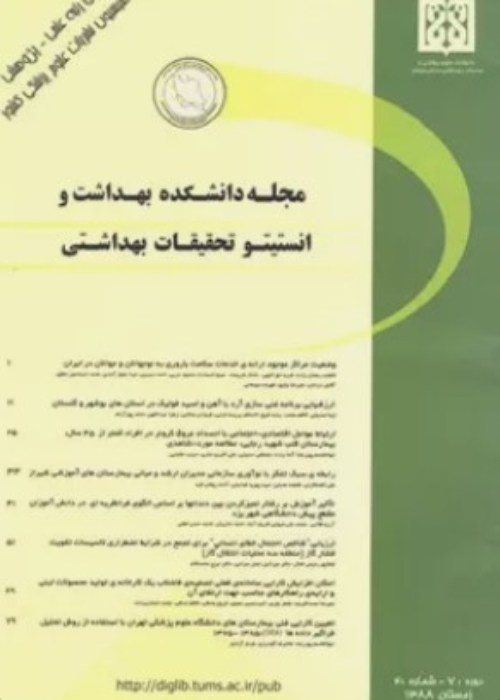A retrospective study on distribution, frequency and rate of parasitaemia in patients infected with Plasmodium species in Kerman Province, Iran during the period 2009-2010
Author(s):
Abstract:
Background And Aim
Malaria is still one of the major health problems in comparison with any other parasitic disease in Iran with considerable economic and mortality consequences. Sistan-and-Baluchestan, Hormozgan and Kerman are the most affected provinces in the country approximately 96% of the cases are reported from these three provinces. The aim of this study was to determine the frequency, distribution and rate of parasitaemia of human Plasmodium (P.) species in patients infected with malaria parasites in Kerman province.Materials And Methods
A total of 92,798 peripheral blood smears were collected from suspected malaria patients during the period 2009-10. Thin and thick blood smears were prepared according to the World Health Organization (WHO) standard procedure. Percentage of parasitaemia was determined based on the number of parasites in the positive slides. The Chi-square test was used for data analysis.Results
A total of 571 samples were found to contain human Plasmodium species, including 523, 44, and 4 cases of P. vivax, P. falciparum and mixed infection, respectively. The results also showed that, as compared with the previous year, the total number of P. vivax cases decreased in 2010 by 33.96%. The highest level of parasitaemia was observed in one of the patients infected with P. falciparum, with 77240 parasites/µl of blood, and the lowest in a patient infected with P. vivax, with 48 parasites/µl of blood. There were no differences between the positive and negative cases as regards parameters such as nationality, habitat or gender (Chi-square, p<0.05). Furthermore, based on the Mann-Whitney test, there was no significant difference between the mean counts of P. falciparum and P. vivax (p-value = 0.464).Conclusion
Considering that Iran is in the elimination stage of malaria, patient finding and rapid, timely diagnosis of the disease are very important, particularly cases coming from Pakistan and Afghanistan, helping sustainability of the elimination program.Keywords:
Language:
Persian
Published:
Scientific Journal of School of Public Health and Institute of Public Health Research, Volume:13 Issue: 3, 2015
Pages:
101 to 111
magiran.com/p1488599
دانلود و مطالعه متن این مقاله با یکی از روشهای زیر امکان پذیر است:
اشتراک شخصی
با عضویت و پرداخت آنلاین حق اشتراک یکساله به مبلغ 1,390,000ريال میتوانید 70 عنوان مطلب دانلود کنید!
اشتراک سازمانی
به کتابخانه دانشگاه یا محل کار خود پیشنهاد کنید تا اشتراک سازمانی این پایگاه را برای دسترسی نامحدود همه کاربران به متن مطالب تهیه نمایند!
توجه!
- حق عضویت دریافتی صرف حمایت از نشریات عضو و نگهداری، تکمیل و توسعه مگیران میشود.
- پرداخت حق اشتراک و دانلود مقالات اجازه بازنشر آن در سایر رسانههای چاپی و دیجیتال را به کاربر نمیدهد.
In order to view content subscription is required
Personal subscription
Subscribe magiran.com for 70 € euros via PayPal and download 70 articles during a year.
Organization subscription
Please contact us to subscribe your university or library for unlimited access!



